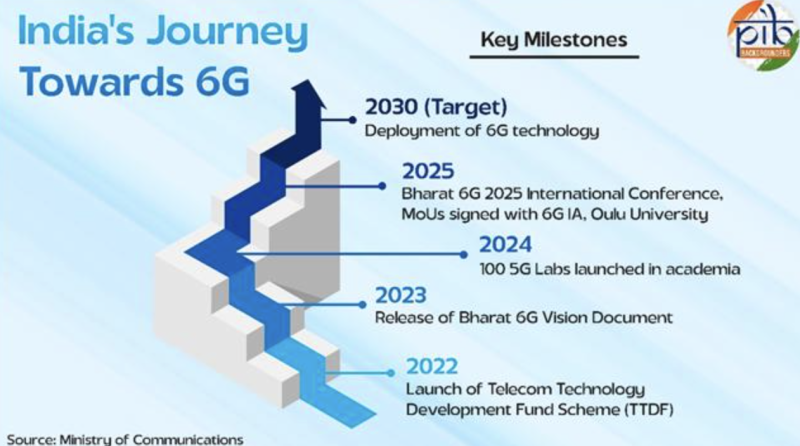India is accelerating its march toward next-generation connectivity, with a clear roadmap to become a global hub for 6G technology. The government is backing strategic initiatives that emphasize indigenous innovation, advanced research, and global collaboration, laying the foundation for a developed India by 2047.
6G, the sixth generation of wireless technology, promises ultra-fast, near-zero latency connectivity, handling massive data volumes instantly. Experts say the technology will enable remote surgeries, smart robotics, immersive gaming, and AI-driven automation, making networks smarter and more efficient.
India has already taken key steps, including the launch of 100 5G labs nationwide, funding for advanced testbeds, and approving over 100 R&D projects aligned with global 6G standards. The India 6G Alliance brings together industry, academia, startups, and research institutes to drive indigenous innovation and strengthen global partnerships.
International collaborations are also in motion, with agreements signed with NextG Alliance (USA), 6G IA (Europe), ESA, and others, ensuring India plays a leadership role in shaping global 6G standards.
The India 6G Vision isn’t just about technology—it’s about building an inclusive, sustainable digital ecosystem, bridging urban-rural gaps, and preparing the country for the next wave of telecom innovation. With a focus on patents, startups, and skill development, India is moving from a technology consumer to a co-creator and global standard-setter.
By 2035, India expects 6G to contribute $1.2 trillion to GDP, with a 10% global patent share, strengthening its position on the world telecom map. The roadmap also includes expanding satellite-based connectivity to support universal coverage and secure networks.
With these initiatives, India is setting the stage for a future-ready, connected, and self-reliant digital ecosystem, signaling a bold leap from 4G self-reliance to 6G global leadership.

